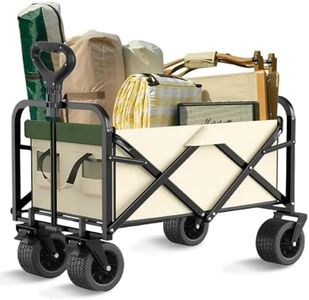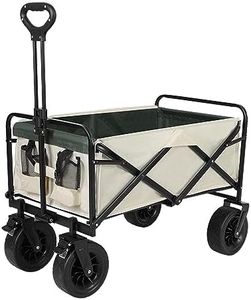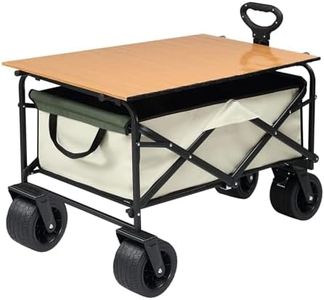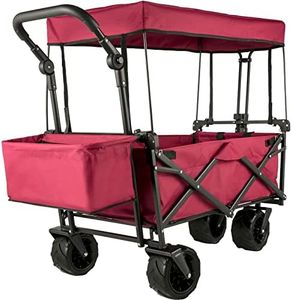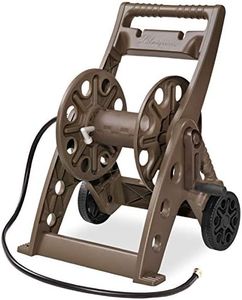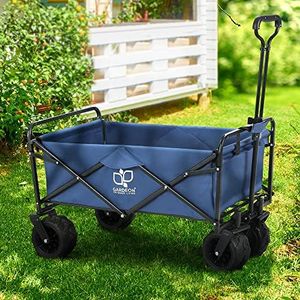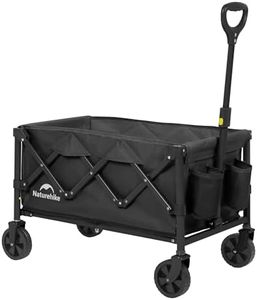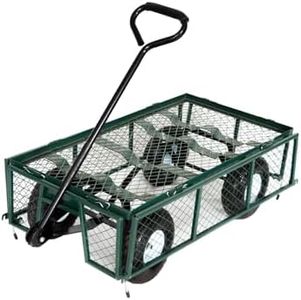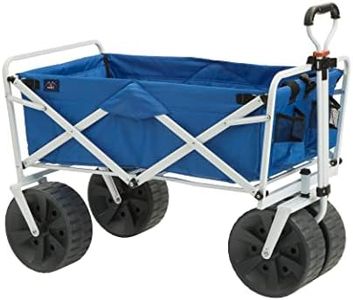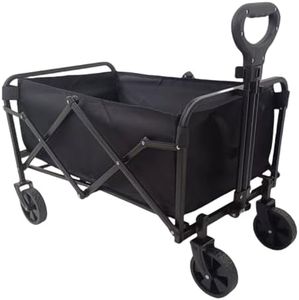We Use CookiesWe use cookies to enhance the security, performance,
functionality and for analytical and promotional activities. By continuing to browse this site you
are agreeing to our privacy policy
10 Best Garden Carts
From leading brands and best sellers available on the web.Buying Guide for the Best Garden Carts
Choosing the right garden cart can make your gardening tasks much easier and more enjoyable. When picking a garden cart, it’s important to think about how you plan to use it—whether for carrying soil, plants, tools, or heavy loads—and the type of terrain in your garden. Key specifications can guide you toward a cart that fits your needs, ensuring you get the most efficient and comfortable experience while working outside.Load CapacityLoad capacity refers to the maximum weight a garden cart can carry safely. This is important because overloading a cart can make it difficult to maneuver and might damage the cart itself. Load capacities can generally be grouped into light-duty (around 150-300 lbs), medium-duty (300-600 lbs), and heavy-duty (over 600 lbs). If you only need to move small tools or bags of mulch, a light-duty cart will work well. For tasks like hauling soil, rocks, or firewood, a medium or heavy-duty option is better. Consider your heaviest typical load and choose a cart that meets or slightly exceeds this need.
Cart Type (Dump, Flatbed, Utility)Garden carts come in various forms, including dump carts, flatbeds, and utility carts. The type determines how you can use the cart. Dump carts have a tilting bed for easy unloading, ideal for moving soil or compost. Flatbed carts have an open platform and are great for transporting large or awkwardly shaped items. Utility carts usually have sides to keep contents contained, which is useful for loose materials or multiple small items. Think about the typical jobs you'll be doing to decide which style makes your work simpler.
Wheel Type and NumberThe wheels on a garden cart affect how easily it moves, especially over rough or uneven ground. Some carts have two wheels, similar to a wheelbarrow, which are good for maneuvering in tight spaces but require balance. Four-wheeled carts are more stable and easier to pull or push on flat surfaces. Wheels can also be solid or pneumatic (air-filled). Pneumatic tires provide a smoother ride over bumps but require occasional inflating. Choose wheel types and number based on your garden’s terrain: solid wheels for smooth surfaces, pneumatic and four wheels for uneven or grassy areas.
MaterialGarden carts are typically made from metal, plastic, or a combination of both. Metal carts are very sturdy and can handle heavy loads but might rust over time if not cared for properly. Plastic carts are lighter and won’t rust, but might not be as durable for heavy-duty work. Some carts have fabric or mesh bodies, which are very lightweight but best suited for transporting items like leaves or small garden tools. Think about whether you prioritize durability or easy handling, and also consider your local weather conditions when choosing the right material.
Handle DesignThe handle on a garden cart determines how comfortable and easy it is to pull or push. Some handles are single and can be pulled with one hand, while others are double or have padded grips for more comfort. There are also convertible handles that can be attached to a lawn tractor for towing. If you expect to move heavy loads or use the cart for long periods, look for a comfortable, sturdy handle. For occasional or lighter use, a standard handle will suffice.
Size and DimensionsThe overall size of a garden cart decides how much you can carry at once and whether the cart will fit through gates or storage areas. Larger carts allow you to move more material in one trip but can be harder to store and maneuver. Smaller carts are easier to store and guide through tight spaces but require more trips for big projects. Measure the spaces in your garden and storage area to ensure the cart you choose will fit and be easy to use where you need it.
